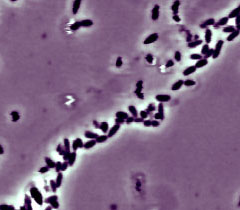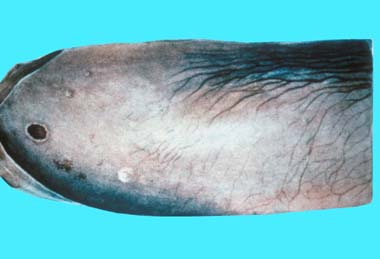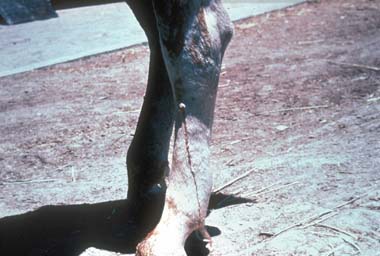Burkholderia: Difference between revisions
No edit summary |
|||
| Line 12: | Line 12: | ||
==Classification== | ==Classification== | ||
===Higher order taxa:=== | ===Higher order taxa:=== | ||
Bacteria; Proteobacteria; Betaproteobacteria; Burkholderiales; Burkholderiaceae | |||
===Species:=== | ===Species:=== | ||
''Burkholderia andropogonis; Burkholderia brasilensis; Burkholderia caledonica; Burkholderia caribensis; Burkholderia caryophylli; Burkholderia fungorum; Burkholderia gladioli; Burkholderia glathei; Burkholderia glumae; Burkholderia graminis; Burkholderia hospita; Burkholderia kururiensis; Burkholderia mallei; Burkholderia phenazinium; Burkholderia phymatum; Burkholderia phytofirmans; Burkholderia plantarii; Burkholderia sacchari; Burkholderia singaporensis; Burkholderia sordidicola; Burkholderia symbiont of Asellus aquaticus; Burkholderia terricola; Burkholderia tropica; Burkholderia tuberum; Burkholderia ubonensis; Burkholderia unamae; Burkholderia xenovorans; Burkholderia ''sp''.; Burkholderia cepacia ''complex'': Burkholderia ambifaria; Burkholderia anthina; Burkholderia cenocepacia; Burkholderia cepacia; Burkholderia dolosa; Burkholderia multivorans; Burkholderia pyrrocinia; Burkholderia stabilis; Burkholderia vietnamiensis'' | |||
==Description and Significance== | ==Description and Significance== | ||
Revision as of 14:30, 2 June 2006
|
NCBI: |
Burkholderia fungorum. From DOE Joint Genome Institute |}
ClassificationHigher order taxa:Bacteria; Proteobacteria; Betaproteobacteria; Burkholderiales; Burkholderiaceae Species:Burkholderia andropogonis; Burkholderia brasilensis; Burkholderia caledonica; Burkholderia caribensis; Burkholderia caryophylli; Burkholderia fungorum; Burkholderia gladioli; Burkholderia glathei; Burkholderia glumae; Burkholderia graminis; Burkholderia hospita; Burkholderia kururiensis; Burkholderia mallei; Burkholderia phenazinium; Burkholderia phymatum; Burkholderia phytofirmans; Burkholderia plantarii; Burkholderia sacchari; Burkholderia singaporensis; Burkholderia sordidicola; Burkholderia symbiont of Asellus aquaticus; Burkholderia terricola; Burkholderia tropica; Burkholderia tuberum; Burkholderia ubonensis; Burkholderia unamae; Burkholderia xenovorans; Burkholderia sp.; Burkholderia cepacia complex: Burkholderia ambifaria; Burkholderia anthina; Burkholderia cenocepacia; Burkholderia cepacia; Burkholderia dolosa; Burkholderia multivorans; Burkholderia pyrrocinia; Burkholderia stabilis; Burkholderia vietnamiensis Description and Significance
Genome Structure
Cell Structure and Metabolism
|
EcologyBurkholderia bacteria are commonly found in the soil and in groundwater worldwide. Burkholderia and related bacteria have been found at soils of all tempuratures including Arctic soil of 7oC. |
Pathology
|
A removed nasal septum of a horse showing different stages of lesions caused by glanders. First, a nodule develops and then ulcerates. It then heals by granulation which leads to cicatrisation and is left as stellate scars. From VEIN |
Lymphadenitis and lymphangitis that has ulcerated to this horse's skin - this is refered to as farcy. From VEIN |
Burkholderia pseudomallei is generally considered a saprophyte (grows on and uses dead or decaying organic matter as an energy source), it also causes the infectious disease melioidosis that is mostly restricted to Southeast Asia, northern Australia, and some other tropical and subtropical regions. It also occasionally causes serious invasive diseases like septicemia and pneumonia in susceptible individuals. Although the epidemiology of melioidosis is not yet fully understood, it is thought that infections are contracted by contact with the organism from contaminated ground water ("for example, in rice paddies") through puncture wounds, cuts, or abrasions in the skin (Godoy et al. 2003). Burkholderia mallei, which is very closely related to B. pseudomallei, causes glanders in horses and other equines and occasionally in humans and other animals. This disease is generally found in parts of Africa, Asia, the Middle East, and Central and South America. The human B. mallei infection is very close to an infection of B. pseudomallei (Godoy et al. 2003). In horses, the bacterial acute infection causes the development of "rapidly spreading ulcers in skin and nasal mucosa" as well as "death within a few days from septicaemia" (VEIN). The chronic disease caused by B. mallei, which is more common, results in lesions and pulmonary involvement. It can manifest in nasal form, skin form, or both nasal and skin form at the same time. Both of B. mallei and B. pseudomallei are considered potential agents of biological warfare or bioterrorism -- CDC lists them in category B of the list of bioterrorism agents (Godoy et al. 2003) . In addition to all this, Burkholderia cepacia is a pathogen associated with chronic lung disease in cystic fibrosis patients (Kiska et al. 1995).
References
General:
- DOE Joint Genome Institute: Burkholderia fungorum
- Godoy, Daniel, Gaynor Randle, Andrew J. Simpson, David M. Aanensen, Tyrone L. Pitt, Reimi Kinoshita, and Brian G. Spratt. 2003. "Multilocus sequence typing and evolutionary relationships among the causative agents of melioidosis and glanders, Burkholderia pseudomallei and Burkholderia mallei." Journal of Clinical Microbiology, vol. 41, no. 5. American Society for Microbiology. (2068-2079)
- Master, Emma R. and William W. Mohn. 1998. "Psychrotolerant bacteria isolated from Arctic soil that degrade polychlorinated biphenyls at low tempuratures." Applied and Environmental Microbiology, vol. 64, no. 12. American Society for Microbiology. (4823-4829)
Pathology
- Veterinary Education and Information Network: Exotic Diseases: Dermatolotical Diseases: Glanders



